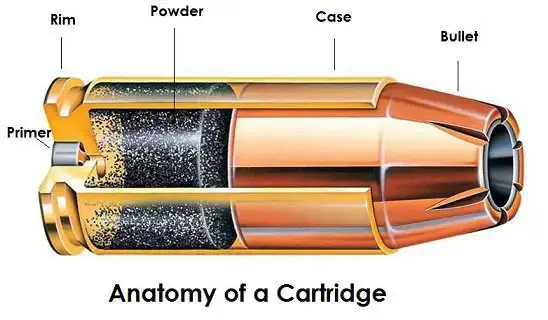You probably don’t think about ammunition packaging when you’re buying ammunition for your firearms but it plays a very important role in protecting and storing the ammo. If you manufacture and sell ammo, the packaging is an important aspect to consider. What is the ideal packaging for ammo? How much ammo fits in a box? How many rounds are in a box of ammo? How much do ammo boxes weigh? What’s the biggest size an ammo box comes in? We’ll try to answer all your packaging questions and considerations in this article.
Custom Cardboard Ammo Packaging
Your ammo box defines your ammo brand. It safely stores your ammo and protects it from the elements. There are many different kinds of custom cardboard ammo boxes available out there in a variety of styles. When it comes to choosing the packaging for your ammo, it’s best to go for custom cardboard ammo packaging. Custom printed ammo packaging is available in different styles customizable for your brand. Custom boxes can have custom inserts or trays for easy packaging and protecting the ammo. You may even choose a custom box with handles or hang tags.

Benefits Of Custom Cardboard Ammo Packaging
Packaging should always be suited to the type of product. It bridges the gap between the product and the consumer. This is why your packaging must be distinctive and dependable.
Custom cardboard ammo packaging offers many benefits for your brand and your product.
- Custom packaging is made to fit your ammo so it protects your product.
- Custom packaging is suitable for shipping your products across long distances.
- Custom cardboard ammo boxes are suitable for branding with attractive designs.
- Custom cardboard packaging is eco-friendly.
- Custom cardboard ammo boxes are economical, efficient, and lightweight.
Auto Bottom Box Style
Now that you know the benefits of custom cardboard packaging for ammunition, you might be wondering how much ammo fits in a box. Well, that’s the beauty of a custom box, you can customize your ammo box according to your ammo sales requirements. However, standard packaging boxes are made for 50 bullets per box for pistol ammo and 20 bullets per box for rifle ammo. Then there are ten boxes in an ammo case. This means that there are 500 bullets per case for pistol ammo and 200 bullets per case for rifle ammo.

How Many Rounds Come In A Box Of Ammo?
As mentioned above, you can customize your cardboard ammo box according to your needs. The following are some standard packaging sizes for holding different amounts of rounds or bullets.
20 Round ammo box
The 20 round ammo box is a compact style of box with a capacity for holding 20 rounds with a tray insert.

50 Round ammo box
The 50 round ammo box is a medium-sized ammo box with a capacity for 50 rounds with a tray insert.

How Much Does An Ammo Box Weigh?
Are you wondering “How much does a box of ammo weigh?” A typical ammunition box or ammo can is made of metal and used for storing and transporting ammo usually for military purposes. It typically weighs about 30 lbs, heavy enough to be used in the combat fitness test for Marines once a year with the ammunition can lift. The military is expected to switch the heavy ammo can for something lighter for easy transport in the future.
However, with cardboard ammo boxes you don’t have to worry about the weight of the box. The cardboard ammo boxes are super lightweight and easy to store and transport. But being lightweight does not mean it’s not sturdy. And if you’re looking for more strength then corrugated cardboard boxes are perfect for you. They bring strength and durability to your ammo packaging without adding much weight.
Ammunition Weight Determines Ammo Box Weight
Let’s take a look at ammo in order to understand how it can impact the ammo box weight. Ammunition comes in a variety of shapes, sizes, calibers, and ultimately weights. The choice of ammunition depends on the firearm. Every gun requires a bullet or cartridge of a specific caliber. However, different cartridges of the same caliber can be different in weight.
What causes the change in weight? It depends on the construction of the bullet. Let’s take a closer look. The correct terminology for a bullet is a cartridge. Bullet refers to the metal tip of the cartridge. There are a number of other components of a cartridge. The propellant refers to the gunpowder which acts as a catalyst for the explosion. The primer is the part of the cartridge that the firing pin strikes upon pulling the trigger. Rim is the base of the cartridge. Casing refers to the shell or metallic cartridge container.
The ways in which cartridges differ from each other is in the design of each of these components, especially the casing. Some examples of different styles of cartridges include full metal jackets, hollow points, boat tails, open tips, and ballistic tips. These differ in the type of casing, bullet, or rim used. There are also cartridge differences based on the type of primer such as centerfire primer or rimfire primers. Yet another type of casing is for shotgun shells where a plastic shell contains small metal projectiles which disperse upon impact. There are further varieties within shotgun shells.

Cartridge weight is commonly measured in grains abbreviated as gr. One grain equals 0.065 grams or one/7000th of a pound. Each of the different types of cartridges mentioned above has different grains or weights. It is common to see cartridge labels mentioning the grain with bullet type. For example, 9mm rounds may come with a label like 100 gr FMJ. This would mean that the cartridge type is a full metal jacket weighing 100 grains. The grain of the bullet impacts shooting accuracy and has implications for when you need to transport a large amount of ammo.
To give you a general idea here are the average weights of 100 rounds of some of the commonly used cartridges.
| Cartridge type/ caliber | Weight in pounds per 100 rounds (lbs) |
| .22 LR | .73 |
| 9 mm | 2.78 |
| .308 Win. | 3.49 |
| .223 Rem | 1.94 |
So your cardboard ammo box weight will depend on the types of cartridges you are packaging. For heavier grain bullets you might need to either pack fewer rounds in each box or choose boxes with more sturdy materials like corrugated boxes for a large number of rounds. Understanding your ammo product better will help you make the best packaging choices for your ammunition.
Conclusion
It might not be obvious but ammunition is sensitive to the elements like moisture and heat. Therefore packaging it well is important to keep it secure. While many different types of packaging are available cardboard packaging is most suitable for ammo. With advantages like custom branding and design, custom cardboard packaging is ideal for ammunition. The answer to how much ammo is in a box depends on your ammo supply requirements. With a custom ammo box, you can easily get the right size for your ammo. Moreover, knowing your ammunition types and bullet grain will help you determine the weight of your ammo box and therefore make the most suitable packaging choices for your ammunition.
